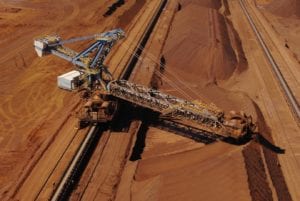Everywhere I go, it seems that people are talking about 5G. I wanted to find out more about the specific role of micro data centers in 5G so I sat down with Steven Carlini, our Vice President of Innovation and Data Centers. Steven is responsible for developing integrated solutions and communicating the value proposition for Schneider Electric’s data center segment. I knew he’d have a wealth of timely insights on the topic and he didn’t disappoint. Here is part of our conversation.
What is your definition of micro data centers?
I would classify micro data centers as two or less IT racks, where a massive amount of computing power or storage can be managed. Today, we have micro data centers as small as 6U that can hang on a wall or even be put in a ceiling! I see micro data centers as a critical extension of cloud data center architectures to reduce latency and add redundancy in a hybrid cloud environment. These micro data centers are a key building block. However, because they are spread out all over the place, they do present challenges in the form of troubleshooting, maintenance, and repair. Also, energy usage becomes a critical operating expense at scale. For example, let’s say you have 2,000 sites and 10 KW per site – that’s 20MW of power! That equates to roughly $20 million in electric bills a year (operating at average efficiency). This is why the efficiency of micro data centers is top of mind for a lot of companies.
Is Schneider Electric investing in micro data centers and/or infrastructure changes?
For Schneider Electric’s Secure Power Division, edge data centers including micro data centers are a top priority. Many projections show that the market for local edge micro data centers will approach or exceed the market for hyperscale mega data centers. Historically speaking, the data center market has been cyclical between centralized and distributed. I see it coming again, but it may move to a more balanced architecture as core and edge become an integrated architecture.
Why are micro data centers important?
Applications and operations are moving closer to the user or the data on the edge and micro data centers are handling many business functions. Think of the hotels that solely rely on local data centers for coding digital room keys and managing reservations. In the future, many hotels are considering facial recognition for completely automated experiences. As the world gets more automated, it will rely more and more on micro data centers.
In a 5G architecture, micro data centers are essential. And, local clusters are necessary to meet 5G performance targets. But we have the speed of light limitation of 300 million meters per second. So, with less than 1 ms of latency spec for 5G, the maximum distance is less than 200 miles round trip – and that’s a theoretical best case. We are dealing with many carriers and they are laying out their clusters in circles with a much smaller radius than 100 miles, especially in densely populated areas.
Can you provide some background on 5G micro data centers?
Let’s start with the two main enablers of 5G: one is the new radio access network (RAN) and the other is the data center architecture. 5G uses microwaves and millimeter waves at very high spectrum so the signal does not go far. An easy way to think of it is the three-house rule: to operate 5G you need an antenna for every three houses. That is how close together they need to be. And, let’s go back to the speed of light at 300M meters per second. The only way to achieve the required latency of less than 1 ms is to build local clusters that will include micro data centers. In a recent 5G test in Chicago, a 4K movie was downloaded in 20 minutes using 4G and 19.5 minutes using 5G. Why did that happen? It was because the only 5G portion on the connection was from the small cell hanging on the light pole to the phone – about 100 feet. The movie was in a data center many miles away. In the near future, micro data centers will serve the function of mobile edge computing (MEC). They will have traditional telco functions, like call routing, and also IT functions, like content delivery. For example, that movie could have been stored in the small cell and downloaded almost instantly.
What will 5G micro data centers do for energy savings?
This is a lively discussion topic as Schneider and our industry have been focused on energy efficiency for larger data centers over the years. Our goal is to make the micro data centers as efficient as the hyperscale data centers with no increased OpEx. Schneider, like many companies, has carbon neutral goals and edge data centers are a big part of those goals. We know that globally, millions of units will be needed to support 5G. As we discussed, the energy use is being shifted from the core to the edge, and it’s a top-of-mind issue to address energy efficiency. For 20 MW, 2,000 10kW micro data centers, a 20 percent efficiency reduction will roughly cost an extra $4 million per year. That’s why it’s important to make sure the designs of micro data centers include highest efficiency cooling technologies like liquid cooling, for example. And we can’t forget the management and maintenance aspect. A cloud-based management system is critical for looking at thousands of sites. And accurate reporting is absolutely essential so it’s clear when maintenance is needed, and it can be performed quickly and efficiently. This has been an area of focus for Schneider.
Can you provide updates on Schneider Electric Secure Power strategy for 2019, and key focus areas for next year?
Schneider is working across different stakeholders that are vying for a leadership spot in the data center architecture needed for 5G deployment. Telco used to be an exclusive country club with only a few members. But 5G, a new technology that embraces openness, is a public course where everyone from Tiger Woods to Happy Gilmore can show up with clubs. In addition to the carriers and traditional telco equipment providers, we are dealing with cable TV service providers, IT companies, and internet giants. Our strategy is to enable these companies to add value in the 5G ecosystem. We are focused on integrating the safest enclosures, latest battery technology, most innovative cooling, and cloud-based management systems. Of course, in 5G, as in golf, the best player will win.
5G: Additional Insights
If you want to learn more about 5G, I encourage you to read other blogs from Steven Carlini on the topic. A few of my favorites include:
- How data centres will breathe life into 5G
- Powerful Confusion! The Differences Between 4.5G, Pre5G, and 5G Explained
- Worlds Collide! 5G NR Deployment Requires IT and Telco to Converge into a Distributed Cloud Data Center Architecture



